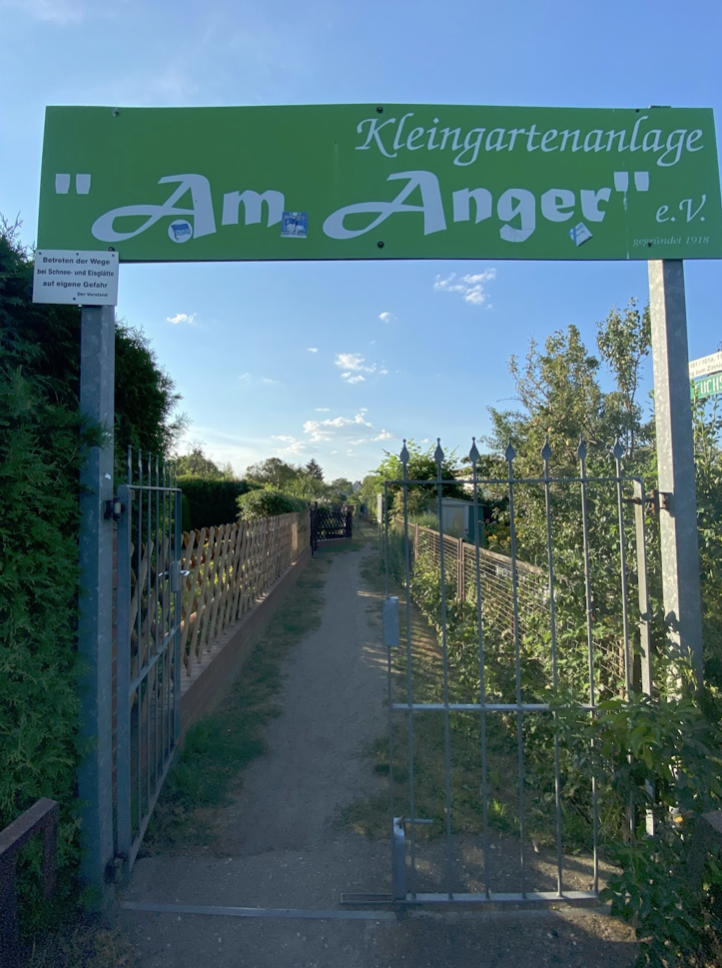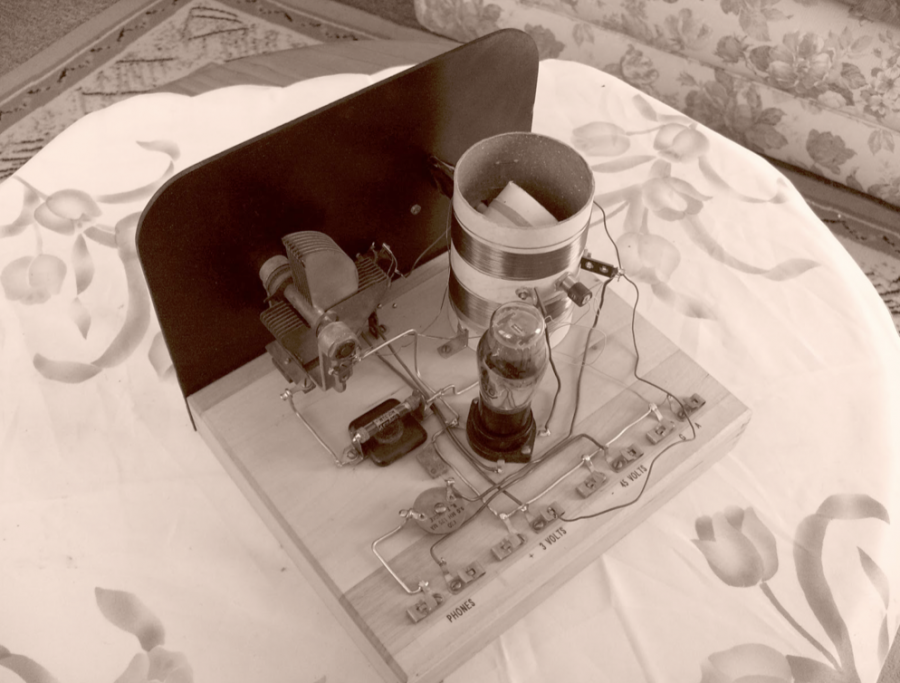Every Sunday, and every day between 22:00 and 6:00, Berlin is peacefully quiet, or is at least supposed to be, yet sounds remain. Some recklessly, and some with permission. Construction halts, but the birds step in to fill the empty sonic space. Trams hum. Outside my window voices carry on. I wake up many a Sunday to the church bells tolling from down the block where the brick church and cobblestone pavement seem to belong in a village rather than Berlin. Among these Pankow sounds, I read about a concept developed in the late 1960’s by musician and professor R. Murray Schafer—in 1976, he introduced the field of acoustic ecology in his book, The Tuning of the World. There, he wrote about “sacred sounds”, or the sounds which society prefers. These noises are prioritized and allowed to be as loud as necessary, so that they come to dominate the acoustic environment, sometimes to the detriment of other, often more localized sounds. Since the Industrial Revolution, society’s sacred sound has been the hum and clang and puff produced by factories, transportation, and industry. This ruckus has continued to express itself in increasing decibels, though the rise in volume has been relatively unnoticed until recent decades.
Schafer focused a lot of his work on the increasing uniformity of urban sound in modern cities, resulting in hectic and noisy, but boring, soundscapes. Droning was his word for this type of sound—the hum of electricity, the roar of engines—constant distracting background noise. His hope for acoustic ecology was to provide a framework for more than noise abatement—he urged people to find the sounds that they wanted in their cities and amplify them, and hoped that urban planners would someday be provided with an education in acoustically-minded city design. In most of the world, this dream hasn’t quite come to fruition. Cities have grown larger, and despite measures to reduce noise pollution, soundscape monitoring and curation has remained a neglected area of urban planning. After all, cities are noisy places, and always have been. (Schafer mentions complaints in ancient Roman cities over vegetable carts on the street early in the morning). Meanwhile, industrial noise is evermore present. In comparison to other cities, the lack of noise in Berlin, and especially in Pankow, can be striking—it sometimes feels as though we aren’t on the edge of the most populous city in the EU. This may be due in part to the relatively stringent noise regulations in Germany, where in residential areas, noise levels are not allowed to exceed 55 decibels during the day and 40 at night.
Yet, regardless of any level of regulation, sound is inevitable. We all inhabit sonic space, all the time. Not only is it impossible to live in a world of silence, it’s also not desirable. Noise in its droning, loudest form is what bothers us. I used to live in the logging lands of Northern California, where you could hear the chainsaws and screeching tires of bobcats pulling down trees for miles— it was inescapable. The sounds radiate beyond the site of their origin at the time of its occurrence in a way that a sight, for example, cannot. I could hear in real time a clearcut being made, forest being torn down. It is this ability to reach beyond the visual limitations of space which makes sound so distinct as a sense of the commons, of shared places. I realized years later that the logging companies whose chainsaws I heard every few days in the summertime, working until the rains came, would leave one illusory line of trees along the roads and at intervals throughout large clearcuts so that passersby wouldn’t notice just how destructive they were. It was remarkably effective. The extent of the changes being made to the shared environment of all humans, animals, and vegetation living in the area were disguised using the human reliance on sight. In this sense, sound was more real, and more political, speaking to what was occurring at the time, beyond the false container of the treeline.
In September, I attended a lecture at the Haus der Kulturen der Welt (House of World Cultures) which centered around the idea of the commons as historical, theoretical, and political spaces where all members of society may access shared cultural and/or natural resources. Silvia Federici, an activist and theorist of the commons, joined via Zoom to give an overview of the relationship between feminism and common spaces. One of her interests is the recent proliferation of urban gardens as, “centers of sociality, knowledge production, and cultural and intergenerational exchange,” spaces which have been designed and maintained “thanks mostly to the initiatives of immigrant communities from Africa, the Caribbean or the South of the United States.”
In Berlin, city dwellers have access to many (about 70000) shared urban gardens, which I experienced for the first time without having read about them previously, walking in Pankow. These urban gardens are direct descendants of early 20th century working-class land allotments, where the land was mostly used for supplementing families’ food supply, and now serve as shared social as well as culinary spaces. What is so special about these gardens is partly that they provide oases of quiet in a large urban area, where conversation is encouraged not only by the shared space, but by the lack of droning urban noise. The trees and groundcover help muffle sound, creating a very local sonic space where the outside world of trams, buses and people is much less noticeable.

Spaces such as Berlin’s urban gardens serve as community-generated and maintained commons. Such autonomy is imperative for the health of communities which lack officially designated space in which to operate. During the coronavirus pandemic, many of these spaces were forced to move online or otherwise adjust their operations. Communities around the world reacted in site-specific ways in order to preserve their commons without access to physical space. After Federici spoke, a group of ambassadors from Brazil, representing a coalition of sex workers and indigenous forest defenders, began a conversation about the state of the commons in Brazil and the ways in which they are responding to the attacks suffered by shared natural and social spaces. melke~ta’wa, a curator of the Museu do Sexo das Putas (Sex Museum of the Whores) in Belo Horizonte, Brazil, spoke about the role of the museum in creating a space for marginalized voices in the city center. Within the museum they run a radio which began during the pandemic, when the world fell more silent than it had been in many decades (leading to a 50% reduction in seismic noise and a change in the very vibration of the Earth). This radio’s objective is to maintain an exchange of information even in times of physical isolation, carving out a decentralized source of knowledge in which many voices are accessible to the public, even if that public exists in a distant space.
Radio is a relatively new form of sonic commoning. The first voice and music signals aired over public soundwaves in 1906 from Brant Rock, Massachusetts, beginning the age of talk radio with the sounds of a violin playing O Holy Night and broadcaster Reginald Fessenden reading a passage from the Bible. A lot has changed since then, but the basic premise of radio as a decentralized common space in which a plethora of voices can coexist remains to this day.
Bernie Krause, a collaborator of Schafer’s, developed the idea of ‘acoustic niches,’ or sonic spaces in which species and individuals produce distinctive sounds in order to avoid overlapping and competing with nearby sound-producing entities. This phenomenon produces heterogeneous and diverse soundscapes in which many types of sound can be audible without conflict. The theory implies that each human, animal, or other sound-producing being has the ability to produce an acoustic signature which is absolutely unique to itself, at least within the local sonic environment. In Krause’s work, the focus was on animal communication, and the disruption to natural ecologies suffered as a result of human interference. Radio provides a different take, functioning as an example of human acoustic niches by allowing for a confluence of many voices in a non-zero-sum manner.
I’m not sure how I stumbled upon Gilberto Esparza’s work while searching the Internet (that most ubiquitous of common spaces), but I’ve been enchanted ever since by his ability to express the postnatural using sound and pollution, plants and robots combined. One project of his, BioSoNot (2017), translates biological activity into sound while cleaning contaminated water, creating soundscapes which map the levels of various pollutants, pH, temperature, and bacterial composition of rivers and other bodies of water. Therefore, the river’s various components are expressed as a soundscape unique to a particular body of water at a certain moment in time. Theoretically, a listener could, if equipped with an understanding of the connection between sound and the water quality measurement from which it was derived, listen to BioSoNot and know intricate details about the composition of the river water being used. It could even be said that Esparza’s creation allows the river a mechanism to speak by providing a translation between the water’s chemical composition and a medium in which humans communicate. The BioSoNot is a political tool, raising awareness about the pollution of Mexico’s rivers, and simultaneously a sonic artwork, and has its practical application in cleaning river water. By creating sound both using and with river pollution, the artwork presents the river as an interlocutor of the listener.
In artworks such as Ezparza’s, there exists an interspecies commons. By this I mean the ability of various beings to share a space—in this case, an acoustic space—in which they can communicate and act together politically. The creation of diverse and site-specific soundscapes, be they in a museum in Belo Horizonte, a river in Mexico City, or a college campus in Berlin, counter the droning noise which Schafer was so worried about and strengthen the communicative bonds of the community. Regardless of locale, urban life reimagines itself in considering the preservation and further creation of such sonic niches, especially in re-sorting the commons for all city-dwellers.

